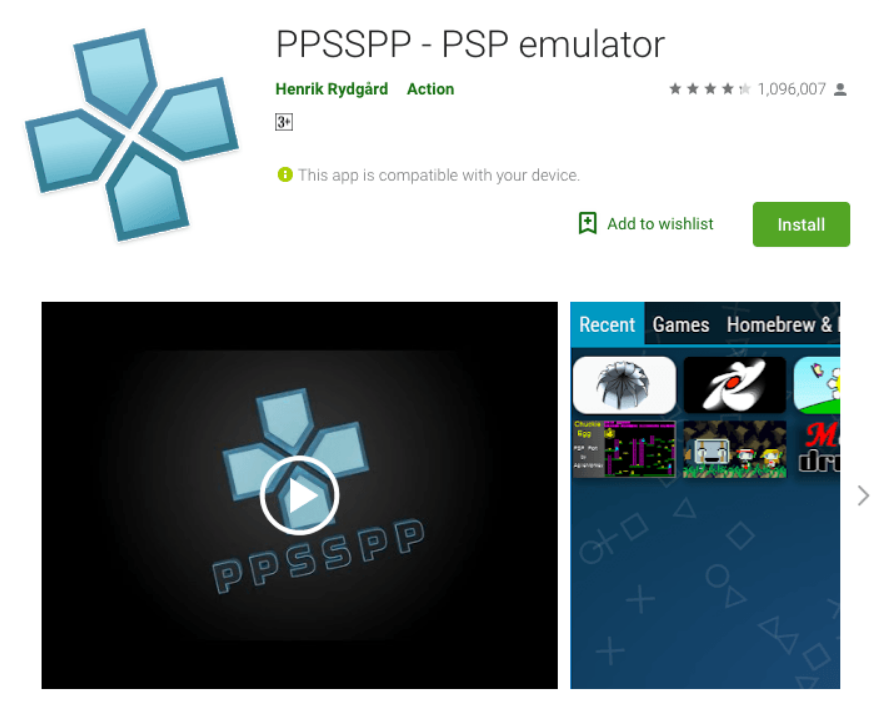

I enjoyed the return of anime-style cut scenes, which work wonderfully interspersed with the quirky visual style of the game. Since Persona 4 is on the PS2, the game obviously doesn’t have the graphical capabilities found on next-gen games, but that doesn’t mean it’s unappealing. The characters may not all be as appealing as the ones in the previous iteration, but that’s a matter of personal taste. It’s hard to find things not to like about Persona 4, especially for fans of the series.
System requirements for ps2 emulator mac series#
This is part of what makes the Persona series so unique despite having so many elements of traditional Japanese RPGs. Each decision the protagonist makes, from answering a question in class to figuring out what to do after school, feels like it carries some real weight to it, and comes with consequences.
System requirements for ps2 emulator mac tv#
Time management is a big factor in Persona 4, especially with exploration in the TV world taking place after school instead of at night it’s sometimes hard to balance fighting, clubs, sports, part-time jobs, and social activities, but it’s also important. Links can be formed with certain people or groups throughout the game, some of which are introduced through story elements, and others that have to be found on your own. The social link system is almost exactly the same as it was in Persona 3, albeit with a completely new cast of characters to befriend. There is nothing more frustrating, in any game, than losing a lot of progress, and I just felt that it was unnecessary to keep this element of the game. This can be a little cheap sometimes, especially if you’ve just explored ten floors and stumbled upon an extra-tough foe who immediately exploits your weakness, acts once more, and kills you. Another annoyance is the fact that if the protagonist is knocked out in battle, it’s automatically Game Over-despite the fact that you can now control your teammates. That is, as long as you know to go into battle prepared.

However, since you can buy items that allow you to leave a dungeon and later return to the floor you left off on, this is easy enough to get around. This can be frustrating if you don’t have the time or resources to go ten floors of fighting without saving, as there is only one save point in each section (on the highest floor before the area’s main boss). This may seem really strange to some, but MegTen games are no strangers to controversy, and these internal struggles are integral to the plot.Īnother change to the dungeon crawling is the removal of portals every five floors to allow the player a chance to leave if he or she so desires.

For example, one dungeon represents a tough teenage gang member struggling with his sexual identity, and the area appears as a steamy bathhouse. As a result of this, there are some very dark and sometimes disturbing themes at work in this game, and Atlus does not shy away from uncomfortable topics. In place of one very tall dungeon, there are different areas for different characters, as the dungeons and bosses represent hidden feelings and suppressed thoughts of the victims. Weather changes have replaced lunar cycles in dictating when important events take place, but the game still progresses on a timeline that follows a school year. That’s right, they actually go into a TV, a power that only a certain few characters have. While the shadows and dungeon area in Persona 3 existed in a strange time called the “Midnight Hour”, this time around the party goes into a foggy world inside the TV. Somehow, despite only a little over a year between releases, Persona 4 has managed to suck me in just as much as its predecessor, and I haven’t wanted to stop playing since. It wasn’t long before I was once again ignoring my next-gen systems, watching hours that felt like minutes pass, as I sat in front of the television compulsively making social contacts, crawling through dungeons, and collecting and fusing Personae. When Persona 4 was announced I thought that no game could ever live up to the experience of P3, even if it was part of the same series, so I went into it with cautious excitement. Over a hundred hours later, it had become my Game of the Year, despite being on a last-gen system. That changed when a strange-looking, little-known game called Persona 3 came out for the PS2 in the summer of that year, and despite being unlike anything I had ever played before, I soon grew obsessed with it.

Review: Before 2007, I was unfamiliar with the Persona series, as well as the entire world of Shin Megami Tensei.


 0 kommentar(er)
0 kommentar(er)
